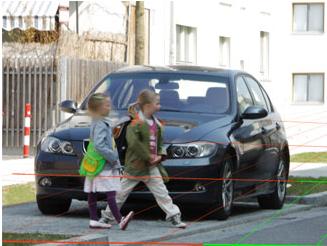If you like the idea of hybrid or electric cars that whir silently down the road without the noise of an engine exploding gasoline thousands of times each minute, you'd better act fast.
The U.S. government is moving inexorably toward a rule requiring all hybrid and electric cars to make noise whenever their engine isn't running.
The National Highway Traffic Safety Administration (NHTSA) published a notice of intent and request for comments on its website yesterday, as it moves to implement last year's Pedestrian Safety Enhancement Act.
Targeting electric motors, not noise
That law requires the NHTSA to "establish a standard requiring electric and hybrid vehicles to be equipped with a pedestrian alert sound system that would activate in certain vehicle operating conditions to aid visually-impaired and other pedestrians in detecting the presence, direction, location, and operation of those vehicles."

2011 Nissan Leaf
Instead, it targets only vehicles with specific propulsion systems: those that can operate on electric power, whether for a mile or less (e.g. the 2011 Toyota Prius) or for up to 100 miles or more (battery electric vehicles like the 2011 Nissan Leaf).
The NHTSA issued two reports on pedestrians and vehicle noise levels. The first, in October 2009, seemed to show higher accident rates among hybrid vehicles than non-hybrid models of the same car.
The second, in April 2010, covered vehicle noise levels among different types of vehicles and how people nearby perceived them, without looking at accident rates.
NHTSA highlights own flaws
The difficulty is that there's simply not enough data on actual pedestrian injuries and deaths attributable to quieter cars. Part of that reflects a lack of categories to reflect such a problem, and the low incidence of pedestrian injuries in general.

Pedestrians: Small children walking across an intersection
And electric-vehicle advocate Mark Larsen did his own analysis, using NHTSA Fatality Reporting System data, that concludes there is essentially no data showing higher fatalities or increased injuries to pedestrians since hybrids hit the market a decade ago.
Wheels of the law move forward
Nonetheless, under political pressure from the National Federation for the Blind, Congress enacted a bill and the NHTSA must now implement it.
We can only view with resigned amusement the fact that the usual critics of any and all government regulation of the auto industry are remarkably silent on this issue.
Rather than gathering solid data or leaving it to the automakers to decide how to solve the problem--pedestrian proximity sensors, anyone?--a badly-written Congressional bill has mandated a single solution to an ill-defined problem that may not exist.
Seeking silence? Buy soon
Meanwhile, if you want a quiet hybrid or electric car, buy one soon. The NHTSA must issue a draft standard by July 4, 2012, and a final rule two years after that. Then manufacturers have roughly three years to comply.

2011 Hyundai Sonata Hybrid
Among plug-in cars, the 2011 Chevy Volt has a driver-activated pedestrian alert function, but at the moment, it doesn't automatically make noise below any given speed. But sounds vary across different models from different carmakers.
U.S. models of the 2011 Nissan Leaf emit a kind of Star Wars whir below about 15 mph--except in the U.K., where the government required the noise to be deactivated so as not to disturb neighbors between 11 pm and 6 am.
You have been warned.
[NHTSA via Bloomberg]
+++++++++++













